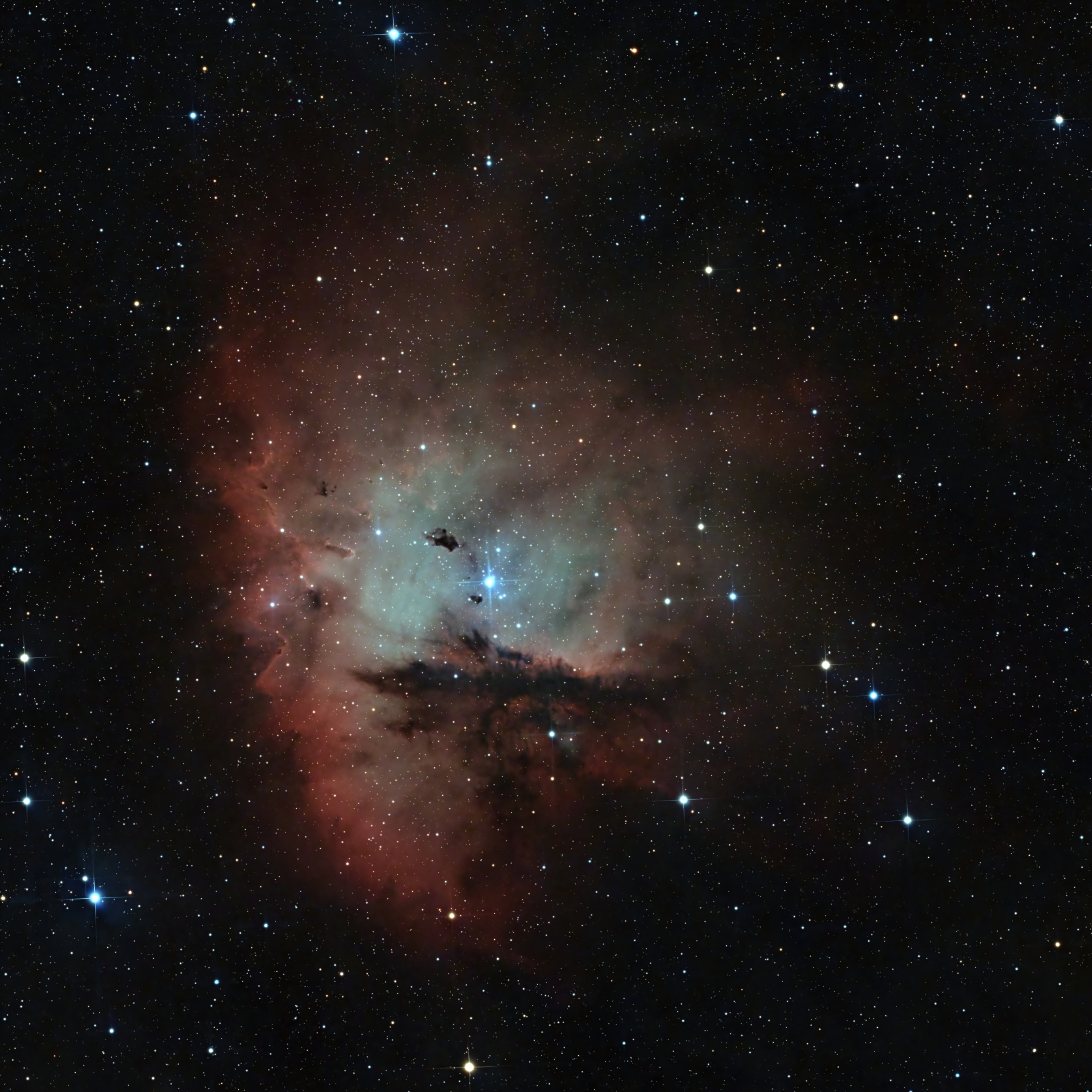

Sh2 184, THE PACMAN NEBULA
Sh2 184 on 2024-09-8,9,10. The Pacman Nebula, also named NGC 281, is an emission nebula in the constellation Cassiopeia with an apparent diameter of about 40 arcminutes. The nebula is ionized by the relatively young star cluster IC 1590 (only about 3.5 million years old), and primarily by the multiple star system HD 5005, the bright star in the center of my picture. The distance from the Pacman Nebula to Earth is approximately 10,000 light years. The Pacman Nebula contains many Bok globules. These are dust concentrations undergoing a gravitational collapse which results in new stars. The Bok globules are the small dark nebulae in this picture. The large dark structure just below the center in the image is the star formation region NGC 281-W.
This photo was taken in Kyle, Texas, through a 6-inch f/4 telescope, on a Sky-Watcher EQ6-R mount, with a ZWO ASI533MC PRO color camera, plus an Optolong L Pro Light Pollution Filter. The processing was done in PixInsight. The total image acquisition time is: 7 hrs 31 min 00 sec.
Full Size View Full size files are very large and can take a minute to download. To zoom in or out on a computer, hold down the Ctrl key and use the scroll mouse button, or you can press the + or - key.
Return to https://astronomy.afountain.org/